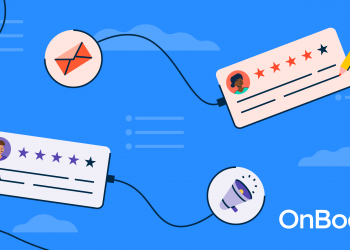How to Elevate Your Nonprofit’s Digital Marketing Strategy – crowdspring Blog
Staying relevant requires constantly evolving your offerings, brand identity, and marketing strategy.
But it takes effort to develop a sophisticated digital strategy for your nonprofit. It can be a resource-intensive process, and nonprofits may hesitate to dramatically change their approach after investing in its initial development.
However, your nonprofit can elevate your digital marketing strategy through small, continuous changes over time. This approach helps keep your marketing strategy up-to-date without requiring your team to re-invent your core processes.
This guide will first explore what digital marketing means for nonprofits before exploring a four-step process nonprofits can use to evaluate and improve their strategy.
What is digital marketing for nonprofits?
Digital marketing includes all the online messages, campaigns, and interactions that promote your organization and brand and expose your nonprofit to an outside audience.
Unlike for-profit organizations, nonprofits need to consider an additional dimension in their marketing strategies: their mission.
A nonprofit’s brand identity should reflect its organization’s core values, such as inclusivity, sustainability, community, and other characteristics representing its unique mission.
Nonprofits should also consider what voice they should adopt when displaying these values.
Some nonprofits may feel a more casual or playful voice will help them connect better with supporters. Others will need a professional voice to encourage trust.
For example, a health-related nonprofit is more likely to succeed with a digital marketing strategy that prioritizes showing its organization as highly knowledgeable and hardworking rather than fun. Work with your team, supporters, and board members to determine how to best shape your voice to fit your nonprofit’s values and mission.
How to elevate your nonprofit’s digital marketing strategy
The digital space is constantly evolving, and your nonprofit’s digital marketing plan should be malleable and adaptable to these new developments. However, remember that one of your best resources for moving forward is data from your past marketing ventures.
To elevate your nonprofit’s digital marketing strategy, use your past campaigns’ information to help create a four-step plan to reach your future goals:
1. Adjust goals based on your data
When planning any new campaign, you should first set a goal for what you want to accomplish. Ensure this goal is specific, measurable, has a set timeline, and is challenging but attainable. By assessing your current operations and reviewing past data, you can create a goal that fits this criterion.
Here is the general process for how most nonprofits review and leverage their data to set digital marketing goals:
- Take advantage of your CRM. Your nonprofit likely reports and stores donor data in your CRM. Many CRMs have reporting features that you can use to forecast trends and compare past data. Additionally, your CRM might have specific features dedicated to marketing your organization. For example, your software might have multimedia marketing management, mailing list management, compatibility with your CMS, and data collection across outreach campaigns. Use these capabilities to see how you’re meeting your marketing goals by looking at data reports. The reports will provide the necessary information, such as which tactics are working and which are not.
- Analyze your data for changes. Using your CRM data, your team should be able to identify trends and takeaways that can be applied to your digital marketing strategy. Specifically, take note of any significant changes between campaigns, such as if your donor demographics, engagement rates, or other relevant metrics have shifted. For example, suppose you see a decrease in direct mail responses but an increase in engagement with your email marketing. In that case, you might consider investing more time and resources into bolstering your email marketing tactics.
- Maintain healthy data hygiene practices. Your data’s usefulness is predicated on how well your team can access and understand your data. According to NPOInfo’s guide to data hygiene, maintaining your data is a necessary process for ensuring that your data is relevant, up-to-date, and completed. Throughout this process, assess your nonprofit’s data hygiene habits. While analyzing your data, check that your records are secure, intuitive to locate, and up-to-date.
After you’ve assessed your data, use the information and data you’ve collected to create an attainable yet impressive goal. You can make your goal realistic based on the data collected from your CRM about which ventures have been successful in the past.
Also, be sure you thoroughly understand your CRM’s features to structure your goals according to your capabilities.
Build a strong nonprofit brand.
Apply to see if your nonprofit qualifies for free design services from crowdspring’s Give Back program.
We just emailed you info about the Give Back program.
2. Determine opportunities for growth
After thoroughly analyzing your data and market trends, you can begin determining how to adjust your goals and what actions you will take to evolve your nonprofit’s strategy.
For digital marketing specifically, consider potential opportunities to:
- Improve accessibility. Technology has transformed accessibility for the better, and implementing accessibility best practices can help you gain more supporters and streamline your web design. You can implement accessibility features on your website, such as adding alt text to your images and captions and transcripts to your videos. This allows individuals with screen readers to learn more about your mission, making them more likely to support your cause.
- Expand to multiple platforms. If your marketing efforts have been concentrated on only one or two platforms, consider branching out to other promising forms of outreach. For instance, if you’re active on just one social media platform, you might decide to explore new sites and different types of content they specialize in. Or you can experiment with retargeting ads to expand your donor base and volunteers.
- Hone your visual branding. Your marketing materials’ visual aesthetic represents your brand and can potentially attract or repel supporters. Ensure your marketing materials are professionally designed and follow the same cohesive brand guidelines. Consider working with a graphic designer to assess and revise your visual branding to attract more supporters.
- Leverage SEO opportunities. Search engine optimization, or SEO, is the process of optimizing your website to improve your content’s ranking in search engines’ results pages. By honing your SEO practices, you will likely gain more organic traction for your website. Additionally, your organization can apply for the Google Ad Grant for nonprofits, which provides your nonprofit with a set amount of funds to launch paid ad campaigns.
- Center your mission. If it isn’t already, make sure your mission is at the core of your marketing materials. For example, you might include a link to your mission statement page on your digital marketing banners or social media bios.
- Branch out to text messaging. Text marketing can be a crucial part of your online giving strategy. In fact, 49% of all mobile gifts came from links sent as texts. Adding a text-to-give tool to your software can broaden your mobile marketing efforts and improve your donors’ user experience.
3. Try new content strategies
Besides adjusting your software and platforms, you can also develop your digital marketing content strategy. You can optimize your content and offerings by:
- Using calls-to-action in your content. Strategically place your CTAs throughout your content, such as overlay on your website’s hero image, directly after compelling emotional appeals, and in highly shareable social media posts. Prompting your reader or audience to complete an action is a straightforward marketing strategy that can result in as much as a 121% increase in your conversion rate.
- Cross-promoting your offerings in related content. Blog posts can be used to promote your ongoing campaigns by discussing a topic related to your campaign, then including a link to your donation page or campaign information page. This prompts visitors to go there directly after learning about your cause.
- Being creative on social media. The majority of nonprofits already take advantage of social media to connect with new supporters. To stand out from the competition, consider how your nonprofit can get creative with how you use and communicate with supporters – especially a growing Gen Z audience – on these platforms. For example, perhaps you conduct a live-streamed interview with a famous nonprofit influencer about a topic related to your campaign. At the end of the interview, prompt your audience to donate to the campaign that they’re now more knowledgeable about. Ask your guest to promote the event to their network to bring in new audiences that may be interested in your cause.
Your donors support you because they resonate with your mission and campaign goals. Ensure you center these ideas throughout your marketing materials.
4. Measure success
Whichever changes you implement, ensure you have processes to collect detailed data to measure your success correctly.
Use your CRM’s marketing data collection feature to generate reports related to key metrics, such as click-through rate, total donations, membership signups, and repeat donations.
You should also consider asking your team, donors, volunteers, and board members which marketing techniques were most effective.
Furthermore, you could include a survey on your donation page to ask donors how they found the campaign. Determine which marketing techniques were the most valuable and least effective to determine your strategy in the future.
Your nonprofit’s digital marketing strategy is an essential outreach tool. Finding new ways to elevate it is vital to your continued growth and success. To improve your strategy, analyze your current practices to determine where improvements can be made and set a goal with a specific timeline to see them implemented. From there, measure your success to continue evolving your approach for years to come.
Source by www.crowdspring.com











